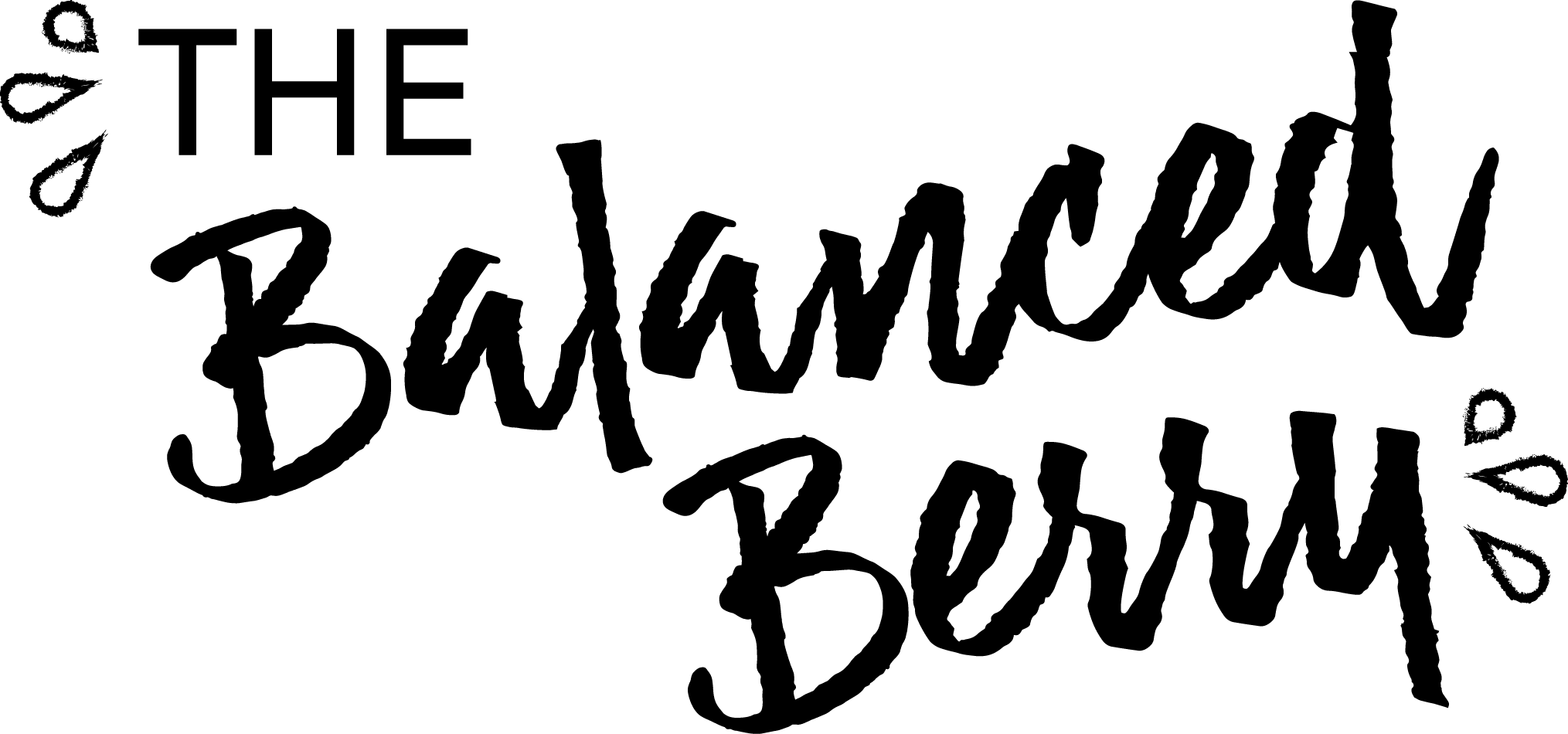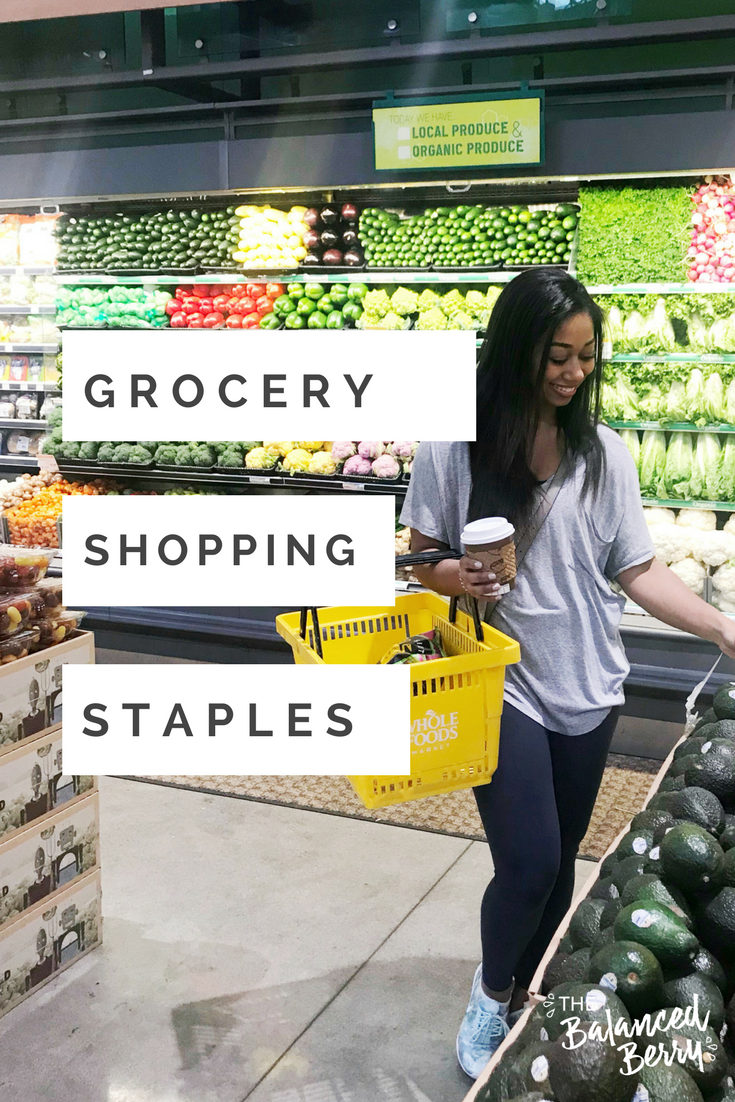
Take a look behind the scenes and peek into my grocery cart. Bonus: you can download a grocery list and meal planning printable!

#teamWFM
A few months ago, I started sharing my weekly grocery hauls on Instagram and those posts instantly became the most popular posts on my feed week after week. If you’re looking for a little healthy grocery cart inspo, I wanted to invite you a step further to give you the lowdown on what I buy, and what I like to use certain ingredients for week after week.
I’ll be honest with you, I really enjoy grocery shopping and enjoy coming home to experiment with new ingredients. I know not everyone loves this as much as I do, but I do think it’s worth noting that 90% of what I eat each week is homemade. Breakfast, lunch, dinner, coffee…that’s just how I roll. But if you’re just looking for healthy breakfast inspo, or want to take bits and pieces of what’s shared to make it work for you, that’s totally cool. Or if you’re just being nosy and are curious about what other people buy 🙋🏾that works too.
Also, know that it’s a big goal of mine to waste as little food as possible each week, so you’ll also find tips and tricks for maximizing each grocery trip to minimize food waste.
Top Grocery Shopping Tips
Eat before you go
Have a snack before you go to the store so you aren’t shopping on an empty stomach. Shopping when you aren’t hungry reduces the chance of impulse buys getting in your cart.
Go in with a plan
Always, always have a plan when you go shopping. Before heading to the store list out the meals you plan to make and list the ingredients needed for these meals. This should be the basis for your grocery list. If you really want to get nerdy with it (you know I do), categorize your ingredients by department – i.e. group your produce, dairy items, center aisle, etc. That way you can make one efficient lap around the store, buy what you need, and (hopefully) reduce food waste by only buying food you have an intended purpose for.
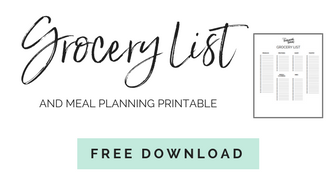
Read ingredient labels carefully
If wellness is a priority to you, then it’s important to be a savvy wellness detective and to understand you’re putting in your cart and in your body. I don’t believe in having foods or ingredients that are fully off-limits, but I do believe that knowledge is power. I think it is valuable to know that a lot of marinara sauces have added sugars, or that a lot of foods include inflammatory oils such as canola or soybean. Does that mean these foods have to be avoided or feared? No. But it is important to know what you’re consuming. Make sure you’re reading labels!
Identify “Next Time” Ingredients
Sometimes you see something new and exciting that catches your eye at the store. I get it. Happens to me all the time. But unless you can actually think of a purpose for that ingredient during the upcoming week, skip it. Chances are, if you don’t have a purpose for it, it will collect dust. We want to buy with intention, so snap a pic to remind you to look for recipes with the ingredient in the future, and incorporate it into your plan for the following week.
Buy smaller portions of treat foods
I’m the last person who will tell you not to treat yo’self, and I’m a firm believer that foods aren’t “good” or “bad,” they are just food. But if you have a hard time keeping the treats in check, opt for buying individual servings for built in portion control. Lots of stores have mini wrapped squares of dark chocolate that can be better to have around than a huge bar, because having the whole wrapped square can feel more satisfying than breaking off a piece of a big bar. Same goes for cookies, crackers, etc.
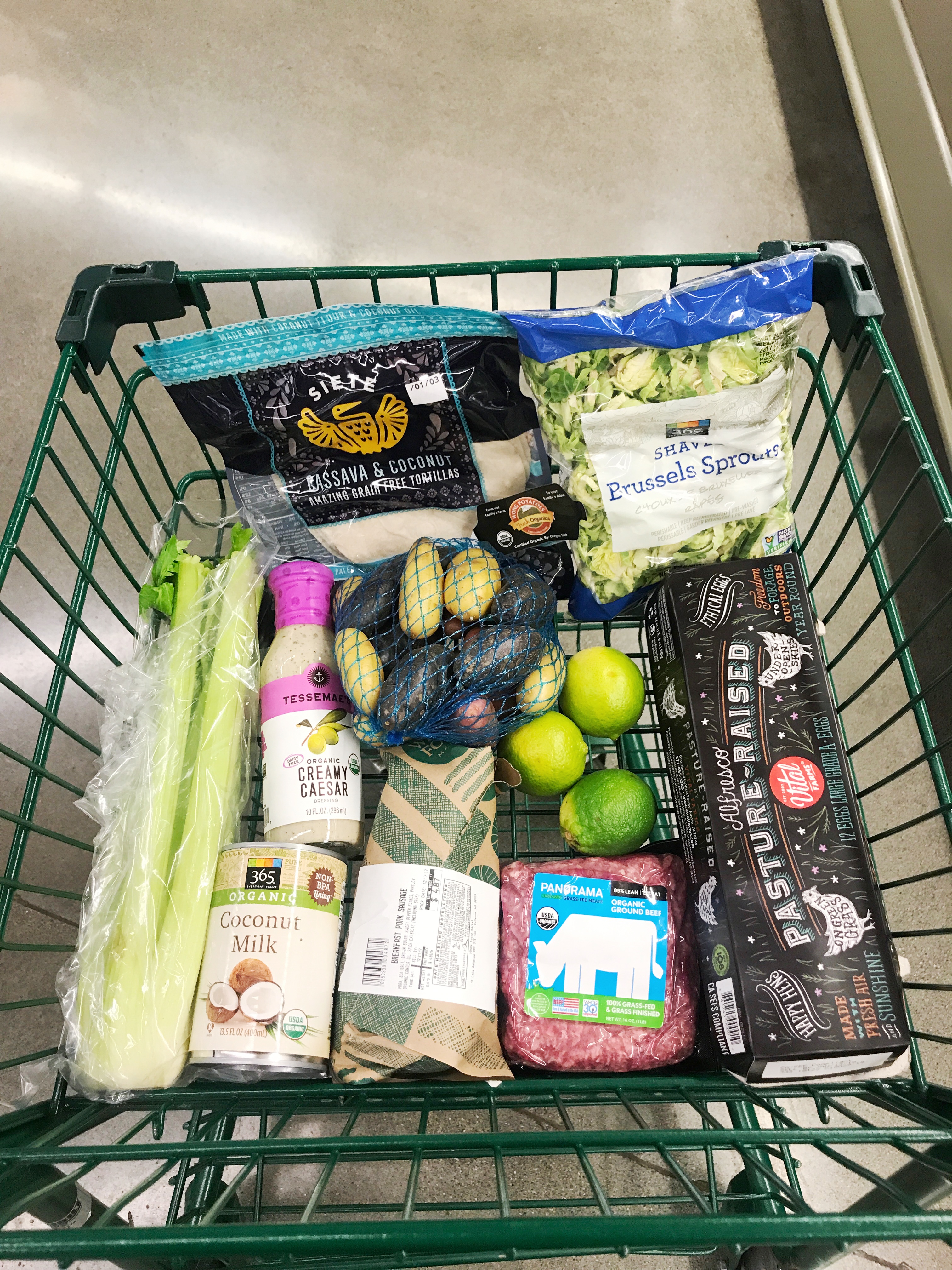
#teamWFM
What to do When You Get Home for Smooth Meal Prep
When you get home from the store, that’s when the real fun begins! There are a few simple things you can do to make the upcoming week go a lot smoother. Here’s what I recommend.
Wash and chop produce
If you bought leafy greens, I recommend chopping and washing them so they are easy to use for smoothies and salads. Washing any fruit is also a good choice, that way it’s ready for a grab and go snack throughout the week.
Freeze and peel bananas for smoothies
I’ve gotten comments about this before, but personally, I only buy 1-2 bananas per week. I don’t love eating fresh bananas on their own because they don’t do much for my energy levels (actually, they cause my energy levels to dip like whoa), but I do like buying a few to freeze for smoothies each week. Peel your bananas, break or slice them in half and throw them in a freezer bag to freeze for the week. Don’t try to freeze them with the peel on!
Shred rotisserie chicken
I’m a big fan of buying an organic rotisserie chicken at the beginning of the week and using it for meals all week long. I’ve found I’m less likely to waste chicken if I carve the whole thing up at once and have shredded chicken waiting for me to throw into meals. You can also use the bones to make your own bone broth!
Help your herbs last longer
Herbs are pretty great, but they last about 0.5 seconds before going bad. To make them last longer, put the stems in a mason jar of cool water and cover with a plastic bag before storing in the fridge. This trick keeps herbs like cilantro and parsley fresh for way longer!
Alright, now that you know all my tricks, let’s talk about the goods. I don’t buy every single one of these items each week, but these are generally the things I like to keep on hand.
Produce:
- Kale
- Spinach
- Spring Mix
- Lemons
- Bananas
- Mandarins
- Brussels Sprouts
- Bell Peppers
- Avocado
- Fresh Herbs (Cilantro, Parsley, Mint)
- Garlic
- Onions
- Ginger
- Sweet Potatoes
Generally, I tend to buy more produce than anything else because I aim to finish what I buy each week, and produce doesn’t keep as long as other ingredients. As far as vegetables go, I like having a leafy green on hand for smoothies, and a few vegetable options for lunch and dinner. I don’t eat a ton of fruit, but like to have 1-2 fruit options on hand for snacks or to add to smoothies. Lemons and avocados are a must every week because I tend to go through these the fastest. I would love to buy all organic everything, but sometimes that just doesn’t work for my budget. I try to at least get items from the dirty dozen organic.
Meats/Protein:
- Rotisserie Chicken
- Grass-Fed Ground Beef
- Ground Turkey
- Boneless Skinless Chicken Breasts/Thighs
- Chicken Sausage
These are my main sources of protein. Normally, I’ll opt for two things on this list each week and will mix and match protein sources to create different meal combinations. I try to buy organic meat as much as my budget allows. I also like to occasionally have wild-caught salmon, but it’s not a weekly staple.
Dairy:
- Unsweetened Almond or Hemp Milk
- Grass-Fed Butter
- Organic Heavy Cream
- Eggs
- Goat Cheese
- Coconut Milk Yogurt
I like to have some form of non-dairy milk in my fridge at all times for smoothies, matcha, turmeric milk, hot chocolate, etc. Lately, my favorites have been almond milk and hemp milk. I like looking for brands that have as few ingredients as possible (minimal gums and stabilizers), and also like to experiment with making my own. In addition, I like having grass-fed butter on hand, heavy cream for coffee, and eggs for baking and boiling for meal prep. Sometimes I do like to have some cheese on hand, and have been liking coconut milk yogurt, although I don’t buy it every week.
Frozen:
- Cauliflower Rice
- Berries (Strawberries, Blueberries, or Berry Blend)
- Mango
- Veggies (Broccoli, Cauliflower, Squash)
Frozen cauliflower rice is an item you will find in my freezer at all times, without fail. I love adding it to just about everything because it’s so versatile. Other frozen staples I usually have on hand include frozen fruit for smoothies, and frozen veggies for when I’m in a pinch.
Spices:
- Cinnamon
- Turmeric
- Sea Salt
- Black Pepper
- Garlic Powder
- Cayenne Pepper
- Ground Ginger
- Paprika
- Cumin
- Nutritional Yeast
This section is pretty self-explanatory – spices are key for adding flavor. To just about anything. These are the spices I have in my cabinet without fail.
Center Aisles:
- Nut Butter (Almond, Cashew, and Sunflower Seed Butter are my fave)
- Tahini
- Salsa
- Olive Oil
- Avocado Oil
- Ghee
- Green Tea
- Chamomile Tea
- Coffee
- Black Beans
- Garbanzo Beans
- Chicken Broth
- Coconut Aminos
- Almond Meal/Flour
- Apple Cider Vinegar
- Balsamic Vinegar
Yes, it’s true that a majority of the good stuff at the grocery store is along the perimeter, but I definitely don’t want to villainize the center aisles – there’s good stuff there too! I don’t buy all of these items every week, but they are things I generally like to have on hand and are common ingredients in a lot of my meals/.
Misc:
- Hemp/Chia/Flax Seeds
- Salad Dressings (I love Primal Kitchen and Tessemae’s)
- Kombucha
- Sparkling Water
And last but certainly not least, the miscellaneous category. These are the other items I frequently buy that didn’t really fit into any of the other categories. I love having hemp, chia, and flax seeds on hand for different reasons. I love blending hemp seeds into my coffee, and sprinkling on top of various dishes for extra protein. Chia seeds are great for chia puddings and as a thickener, and flax seeds are great for egg-free baking and for adding healthy fats, protein, and fiber to smoothies. I like having all three on hand, but even having just one is great.
The salad dressings are pretty self-explanatory. They make just about everything taste better and are an easy way to change the flavor of meals even if you’re using the same ingredients. Because basic is as basic does, I usually like treating myself to 1-2 bottles of kombucha per week, and also really like having flavored sparkling water at night with or after dinner.
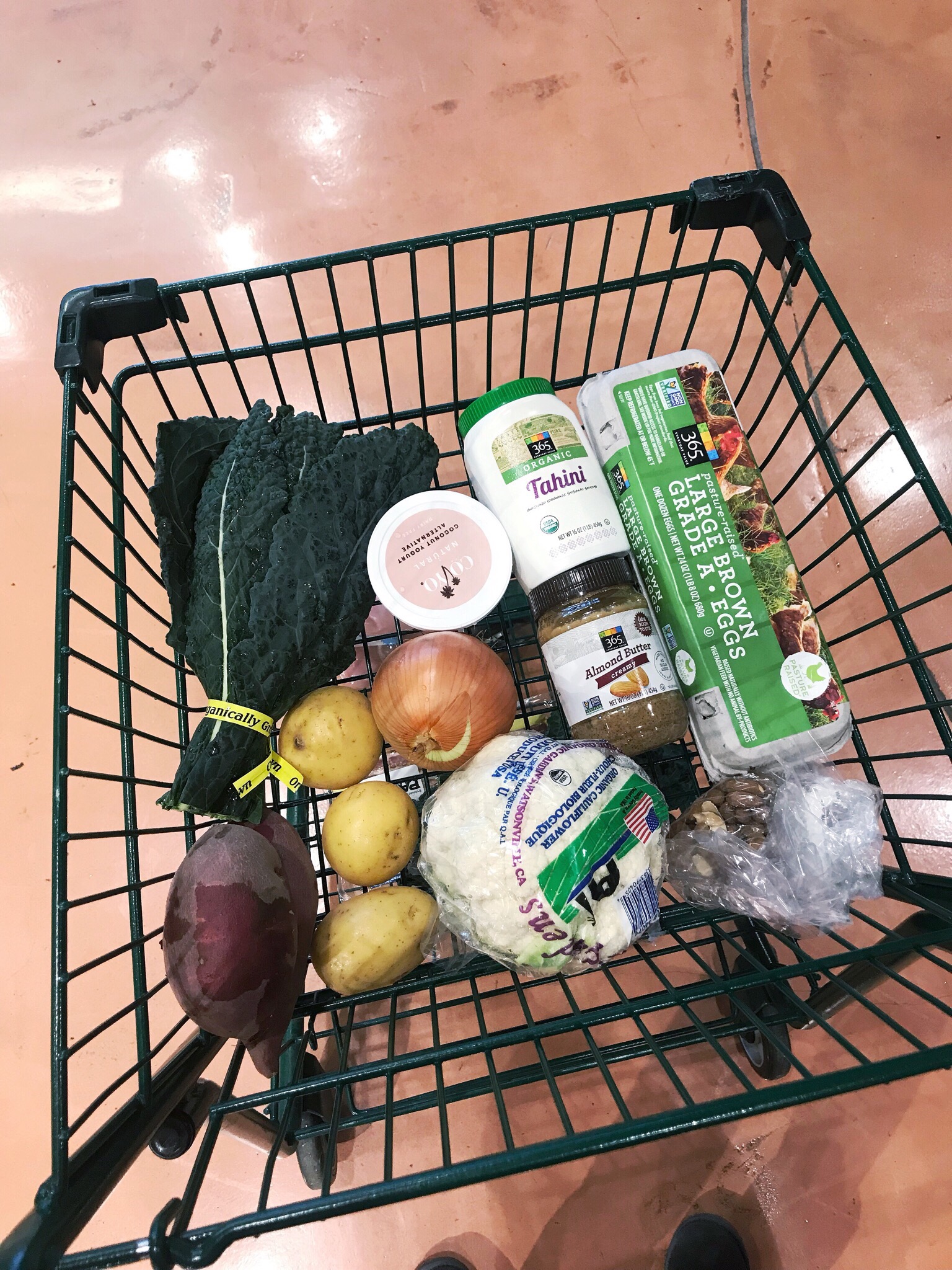
#teamWFM
Ready to get planning and shopping? I’ve put together a printable grocery list and meal planning template for you!

What are some of your favorite grocery staples?
What are your best grocery shopping tips?
